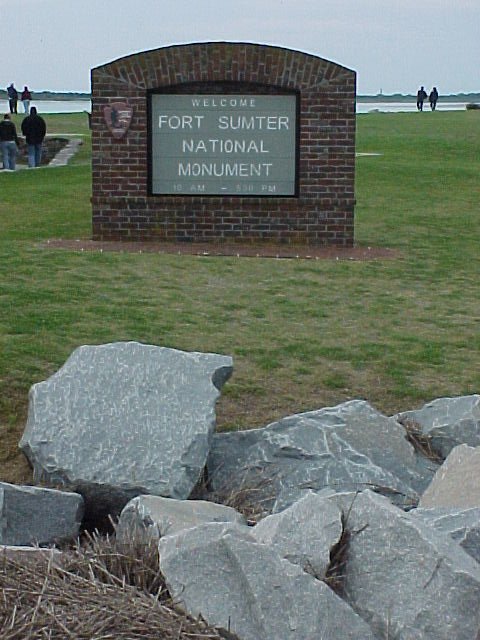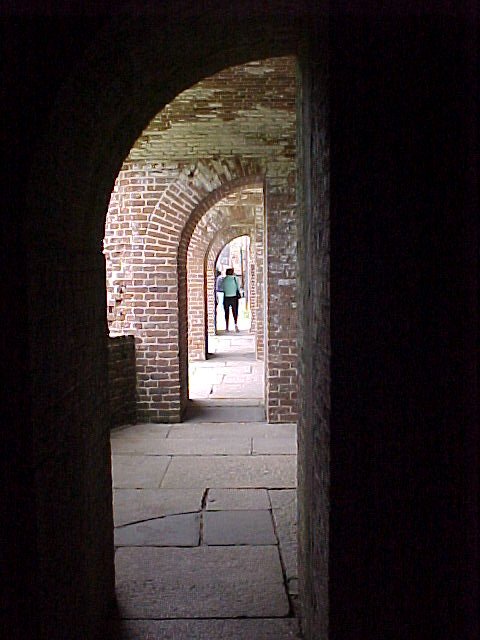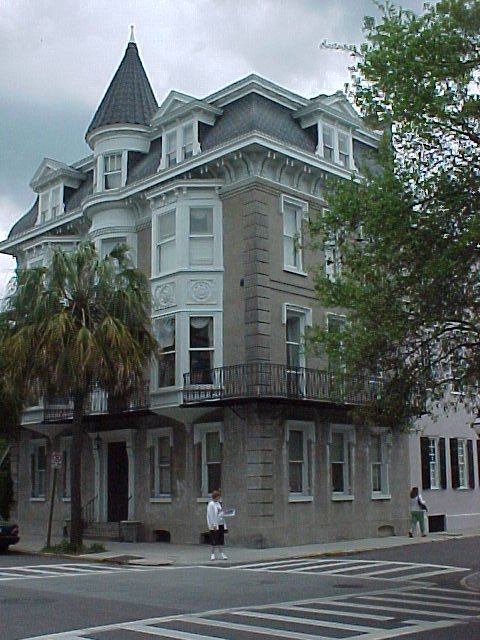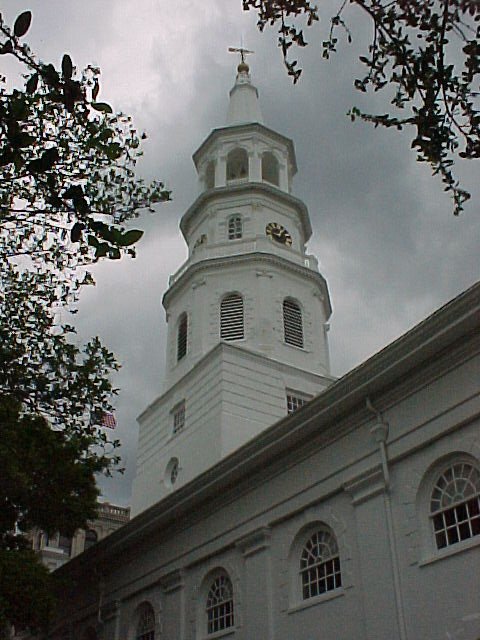Trawling the ICW, day 0
This is a diary of my second trip on the ICW. Unlike most of my writing, this will be more "pictures" than "writing". The first day is decribed on this page. To see other days of the trip, click on the proper box at the bottom of this page.After spending 2 weeks on the Intercoastal Waterway (ICW) the previous year traveling south from Charleston, I was very interested in seeing the ICW north of Charleston. I got the opportunity to do exactly that in the spring of 2008. Captain Frank, the skipper of the Grand Banks 36 "Sea Smoke", had taken me south on that trip 6 months earlier, and was now offering to take me north on a similar trip. After spending winter in the Bahamas, Frank was joining the flock of other "snow birds" migrating north for the summer. He was looking for crew, and I was delighted to accept. On a sunny Sunday morning in April, I jumped in a rental car and headed out of Norfolk for Charleston.
Having made this trip once before, I was interested in traveling a different route for at least part of the trip. I therefore turned off of I-95 a little sooner this time, and headed for Myrtle Beach. I drove to the ocean shore area, and spent 80 minutes walking the beach. It was your typical ocean front tourist destination. There were high rise condos, one after another, running down the beach. The main drag had hotels, motels, restaurants, golf courses, and an amusement park. The beach was very nice sand, and though the water was a little on the cold side, a few swimmers were still out there playing in it. Most were just enjoying the beach and the sun. One thing that did surprise me was the lack of black people on the beach. It seemed strange to be in the "deep south" and find no Negroes on the beach. Anyway, I did my walk, saw the sights on the main drag, and headed south toward Charleston. I stayed in a Charleston motel that night.
I spent most of the next day being a tourist in Charleston. First stop was the tour boat to Fort Sumter. It was an interesting tour, and I learned several interesting "fun facts". For one thing, Fort Sumter is not right in front of the city of Charleston. It is way out in the harbor toward the ocean. You can see it from the Charleston shoreline, but it is quite a ways out there. Charleston harbor, although a major East Coast port, has a lot of low, sandy areas. Several forts were built on some of these low lying sand flats. But, not Fort Sumpter. Originally, the only thing on the current site of Fort Sumter was water. However, the military weenies thought the spot would be a dandy location for a fort. So, they starting dumping rocks in the water. Eventually, enough rocks formed an island, and later a fort was built on top of the rocks.
When the Civil War rolled around, the Union forces were not even hanging out in Fort Sumter. They were in one of the other forts in the Charleston harbor area. The Union commander realized that his small command was "history" if he stayed where he was and the natives got restless. So, he relocated to lonely Fort Sumter in the middle of the night. A few days later, the Confederate forces were blasting the dickens out of Fort Sumter. The Union troops were well protected from the shells, but they had 2 big problems. For one thing, there was no grocery store in the fort. For another thing, most of their ammo was stored next to the officer's quarters. Ammo next to officer's quarters is not necessarily a bad thing, but in this case, the officer's quarters were very much on fire from all the shelling. Not good. After a few days, the Union officer sent up the white flag so he could concentrate on fire fighting. The fort was a mess, but interestingly enough, none of the Union troops were killed by the shelling.
Confederate troops ended up with the fort, but the poor fort was in for a lot more use and abuse when the Union Navy arrived. And, Fort Sumter was not the only target of the Union guns. One of the near-by forts was featured in the final battle in the Civil War movie "Glory". And, Charleston itself was on the receiving end of Union Navy guns for months and months. But, the Confederate forces were stubborn and never were driven out by the Navy. It was General Sherman, fresh from his tour of Atlanta, who finally convinced the Confederate army to withdraw.
After the Fort Sumter tour, I walked around the city for a few hours, and then went on a guided walking tour. Charleston is a delightful city for walking tours. It is big enough that there is lots of history and old houses to see, but small enough that you can reach an awfully lot of it on foot. There are cobble stone streets that came to the city by sea. The stones were originally used as ballast in the ships which were headed to Charleston to pick up cargo. I thought that was kind of cool; some of Charleston's streets could have had a "made in England" sign on them. But, the coolest of the cool in Charleston has to be the houses. They are old, and they are amazing; block after block of them. Being basically a "boat guy", I don't normally get very excited about houses. But, even I was impressed by the classy old houses in Charleston. Whether you do a walking tour, a horse drawn carriage tour, or a mini-bus tour, Charleston is a great place to check out.
At the end of the day, I turned in my rental car and grabbed a cab to the marina. There, I met Captain Frank and his brother Rich, who had been crewing for Frank on the northbound trip from Florida. We walked to a near by marina and had a great meal before returning to the boat. The next day was very windy, so we did another day of museums and house touring. The house we toured was designed to be "balanced". Living on a boat, the idea of "balance" seems like a pretty reasonable thing, but this architect went way "overboard" with the concept. If a room in this house had a door on one side of a wall, the architect "balanced" the wall with a door on the other side. But, the second door was a "false door". It didn't open. It was there simply for visual "balance". How embarrassing to go through life as a door that doesn't open. Another strange thing about the monster house was the absence of guest bedrooms. I guess all the visitors came from the local Charleston area, and there was just no need for overnight accommodations. Or, maybe the owners just weren't all that keen on overnight guests? Who knows. Anyway, Frank and I enjoyed our tour, Rich caught a flight home, and by the end of the day we were ready to continue north toward Frank's summer home in Baltimore.




click on the day you want to see...
 |
 |
 |
 |
 |
 |
 |